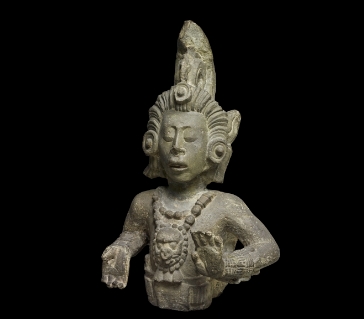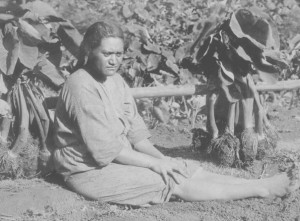Jeremy has just contacted me from London saying that today’s artifact on the BBC’s A History of the World in 100 Objects series is none other than a Mayan statue of (one of?) the maize god, Hun Hunahpu. 1
In Mayan mythology, the maize god was decapitated at harvest time but reborn again at the beginning of a new growing season.
You can read all about it, and listen to the programme, online. I’m sure this will not be the last agrobiodiversity-themed object to be featured on the programme.

